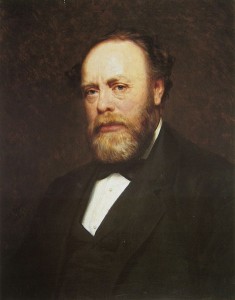Mathias Döpfner, CEO of Axel Springer Publishing, describes how the Nazis snatched Jewish publishing houses, crushed the Freedom of Opinion in Germany and imposed their dictatorship on journalists and writers
July 1st – the Jewish editors leave the building”. Just one line, one succinct sentence, noted down in Berlin based publisher Ullstein’s handwritten chronicle in 1933. This one sentence shows how seriously the ruling National Socialists, who had been in power in Germany for five months, meant with what they termed ‘bringing the press into line’ (Gleichschaltung der Presse).
During the Weimar Republic there were some 147 different daily and weekly newspapers in Berlin alone. Almost all of the many parties, unions and ideological groups had one or more newspapers. The political spectrum ranged from Der Syndikalist, the publication of the left wing anarcho-syndicalism movement at one end, to the Nazi’s Völkischer Beobachter at the other.
For years however, the broad liberal center had been conditioned by publications belonging to Mosse, Scherl and Ullstein. The printing presses of the ‘big three’ lay a stone’s throw away from each other in the legendary Berlin newspaper district around Kochstrasse in Kreuzberg.

“The Nazis abolished freedom of the press and ridiculed the freedom of art. Whoever thought this was just a matter of opinion was mistaken. It was a matter of life and death.” Mathias Döpfner, CEO of Ullstein Publishing
First Geman newspaper funderd through advertising
Rudolf Mosse founded his business in 1867 as an advertising agency and became a publisher through the launch of the Berliner Tageblatt. In the years from 1906 to 1933 the legendary editor-in-chief, Theodor Wolff, was the guarantor for the paper’s liberal focus. The most important German prize for journalism, created by the publisher Axel Springer in 1962, is named after Wolff.
August Scherl established his business in 1883 and was particularly successful with the Berliner Lokal-Anzeiger which was one of the first German newspapers to fund itself through advertising. After Scherl encountered financial difficulties, the business was taken over by the entrepreneur and politician Alfred Hugenberg in 1916, who used his newspaper as a mouthpiece for nationalist and anti-Semitic propaganda. He became one of the most influential opponents of the Weimar Republic and ultimately assisted Hitler’s rise to power.
The biggest fish in Berlin
Without a doubt, the biggest fish in the Berlin publishing pool was Ullstein. Paper merchant Leopold Ullstein established his publishing house in 1877. His sons then turned it into the largest publishing house in Europe. Titles included the Berliner Morgenpost, the tabloid newspaper BZ am Mittag and the weekly magazine Berliner Illustrirte Zeitung.
In the Vossische Zeitung, also part of the Ullstein group, one could read the following clairvoyant commentary on January 30th 1933: “Hindenburg has tasked Hitler. There is trouble brewing. Poverty cannot be abolished, but freedom can. Hardship cannot be banned, but the press can. Hunger cannot be exiled, but the Jews can. The constitution still prevents the gravest abuse of power but, to quote Goebbels, its bonds have worn paper thin.”
Some thirteen years before, on the occasion of the party’s inception on February 24th 1920, the NSDAP’s party programme stated under point 23: “We demand the lawful fight against deliberate political lies and their dissemination. To enable the creation of a German press, we demand that all editors and employees of German speaking newspapers are members of the German race…”
Immediately after seizing power, Hitler’s regime began the reckless implementation of the party’s programme. After the Nazis had marched with their torches through the Brandenburg Gate, they immediately began the ‘clean-up’ of the ‘Jew-infested’ newspaper district.
Boycott and Aryanization
On February 28th 1933 all social democratic, communist or otherwise leftish newspapers were banned. The ‘editor law’ (Schriftleitergesetz), passed on October 4th 1933, allowed newspapers to publish only those journalists who fulfilled the ‘racial’ requirements and who were considered ‘politically reliable’. All other journalists were subject to an employment ban. These rules alone caused approximately 1,300 journalists to lose their jobs on January 1st 1934.
On April 1st 1933, as part of ‘boycotting of Jews’, a crowd of some 150 Nazi party sympathizers chanting anti-Semitic slogans marched through the Ullstein offices to introduce, by Nazi standards, non-Aryan fellow publishers and journalists to the new era. This intimidation was successful: The publishing family relinquished its positions on the executive and supervisory boards and replaced them with ‘Aryan’ Ullstein employees. Later, the Ullstein brothers ‘sold’ their company for 15% of its real value to a trust working on behalf of the NSDAP. This traditional publishing house was finally renamed Deutscher Verlag in 1937, affiliated with the publishing house of the Nazi party.
This “bringing into line” (Gleichschaltung) of the Berlin press is a symbol of the slavery of the Third Reich dictatorship and was a portent of Nazi barbarity.
The same is true for book burning when on 10th May 1933 widely visible bonfires in Berlin and elsewhere signalled the burning of books written by Thomas and Heinrich Mann, Karl Marx, Heinrich Heine, Sigmund Freud, Stefan Zweig, Erich Maria Remarque, Bertolt Brecht, Erich Kästner, Kurt Tucholsky, Carl von Ossietzky or Alfred Kerr.
These fires lit the way right up to the crematoria of Auschwitz. Many commemorative speeches today quote Heinrich Heine’s Almansor from 1821 “Where they burn books they will ultimately also burn people.” However, hardly anybody is willing to draw the necessary conclusions.
The true nature of the Nazis did not first become apparent after walls had been smeared, windows had been smashed, shops had been destroyed and people had been hunted and killed. It was already there five years previously, as the freedom of the press was abolished and the freedom of art was ridiculed and burnt. Whoever thought this was just a matter of opinion and art was mistaken. It was a matter of life and death.
Dr. Mathias Döpfner is CEO of Axel Springer Publishing. He was responsible for the relocation of the firm‘s headquarter to Berlin in 2008
Facts and Figures: Nazi Control of the German Media
Before 1933, the Nazis controlled less than 3% of Germany’s 4,700 papers. Immediately after they assumed control on January 30th, 1933, the state seized the presses of the outlawed Communist and Social Democratic Parties. On March 13th, 1933, Joseph Goebbels was appointed head of the Reich’s Ministry of Propaganda which oversaw all media including public entertainment and cultural programs throughout Greater Germany.
Ullstein, the largest publishing house
As a result of the ‘Aryanization’ measures – expropriating businesses and transfering them to non-Jewish ownership –, the Nazis assumed control of Jewish-owned publishing companies, notably the houses of Ullstein and Mosse. Ullstein was the largest publishing house company in Europe by 1933, employing 10,000 people.
The Mosse family fled Germany the very day after Hitler took power. Reputable journalists left the country in large numbers and were replaced by Nazi partisans or colleagues ready to collaborate with the regime.
Of the 4,700 newspapers published in Germany before 1933, no more that 1,100 remained. While the circulation of papers published by private or institutional owners was about 4.4 million in 1944, the circulation of the 325 newspapers and their multiple regional editions owned by the Nazi Party was 21 million. Presses owned by Nazi Party organs were quickly shut down by the allied authorities.

